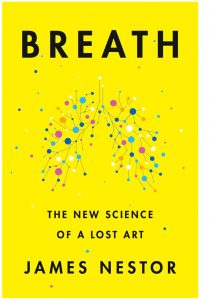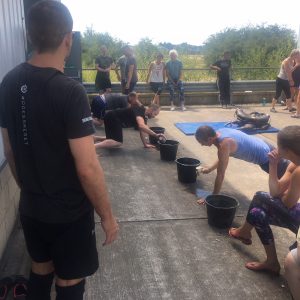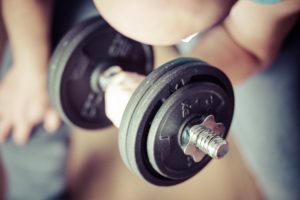Follow Your Nose
 If you’ve visited us for treatment or training or even just followed our newsletter/blog with any regularity, you’ll know that proper breathing is a huge focus for us here at Backs Etc. Quite simply, breathing retraining is a game-changer. So we were very excited when we heard about James Nestor’s new book, Breath: The New Science of a Lost Art. Being fans of his previous book Deep which centred around freediving, a book by Nestor focusing directly on the art of the breath sounded right up our alley. And, with one exception, it didn’t disappoint. Frustratingly, there was no mention of the role of breath in creating Intra-Abdominal Pressure, the foundation of core stability. But even with this omission, there is a wealth of great information, so definitely worth a read.
If you’ve visited us for treatment or training or even just followed our newsletter/blog with any regularity, you’ll know that proper breathing is a huge focus for us here at Backs Etc. Quite simply, breathing retraining is a game-changer. So we were very excited when we heard about James Nestor’s new book, Breath: The New Science of a Lost Art. Being fans of his previous book Deep which centred around freediving, a book by Nestor focusing directly on the art of the breath sounded right up our alley. And, with one exception, it didn’t disappoint. Frustratingly, there was no mention of the role of breath in creating Intra-Abdominal Pressure, the foundation of core stability. But even with this omission, there is a wealth of great information, so definitely worth a read.
But this post isn’t just a book recommendation. Today we’d like to focus on one aspect of proper breathing technique that is discussed at great length in the book: nasal breathing.
If you’ve ever watched a baby breathing, you may have noticed that, barring any developmental issues or a cold, they will always be breathing in and out through their nose. This is instinctive and it is the way we are designed to breathe. Yet, so many of us seem to have lost this over the years, and the effects can actually be quite serious. Perhaps this is why the term “mouth breather” can be used as a pejorative, just as Mike does in Stranger Things.
Breath starts out with a bang. The first chapter is entitled The Worst Breathers in the Animal Kingdom, and you can probably guess who is being referred to. Spoiler alert: It’s us! If a vet or farmer come across an animal that is mouth breathing (except for a few that pant to reduce heat), that is a pretty good indication that the animal is sick, but humans mouth-breathe for years with no idea that something is wrong.
After learning about humanity’s poor breathing epidemic, Nestor and fellow pulmonaut (as those who have stumbled on the power of breathing are referred to) Anders Olsson embark on an experiment casting themselves as guinea pigs. For 10 days, the two men were forced to breathe solely through their mouths, even whilst eating, exercising and sleeping with earplugs wedged firmly in their noses. Phase 2 of the experiment had them repeat the exact same activities, but with nasal breathing as well as some specific breathing exercises. At the beginning, middle and end of the experiment, their blood gasses, inflammatory markers, hormone levels, sleep, pulmonary function, and more were thoroughly tested, and of course, they also documented how they felt throughout.
The results were pretty spectacular. With his nostrils blocked, Nestor’s snoring and sleep apnea events increased dramatically, his blood pressure spiked at an average of 13 points higher than usual, and indeed all of the markers tested indicated increased dysfunction, some quite seriously so, and these effects started almost immediately on around day 2 of the experiment. Anecdotally, though no less significant, he and Olsson felt simply awful, with Nestor describing the experience as being “trapped in some sad sitcom in which nobody laughs, a Groundhog Day of perpetual and unending misery”. Conversely, the 2nd phase of the experiment where the two men breathed exclusively through their noses, produced dramatic improvements in every marker tested, and consequently, they slept far better and felt energetic and mentally sharp.
So, why is nasal breathing so much better than mouth breathing, you may ask. The answers to this are so powerful and numerous that they could probably have their own book, but since you’ve stuck with us this long, we’ll give you a taste:
Nasal breathing produces nitric oxide. This is hugely important as this molecule plays an essential role in increasing circulation and delivering oxygen into cells. Immune function, weight, circulation, mood, and sexual function can all be heavily influenced by the amount of nitric oxide in the body. In fact, Viagra works by releasing nitric oxide into the bloodstream which opens the capillaries in the genitals and elsewhere. The effect of nitric oxide on the immune system is especially crucial during the pandemic we are currently experiencing, and some people theorise that proper breathing can make the difference between being mildly symptomatic and getting very sick if you are exposed to SARS COV-2. If you mouth-breathe you are completely missing out on the benefits of nitric oxide.
Nasal breathing filters the air. The nose is lined with cilia, tiny hairs that can trap potentially harmful particles which would otherwise enter the body. These cilia also help regulate the temperature of the air before so protecting the lungs, helping improve proper lung function. They also moisturise the air, which helps to reduce the risk of respiratory conditions. If you wake in the morning with a dry mouth that indicates that you have probably been mouth breathing during the night and so would benefit from taping your mouth at night as described in the book.
Nasal breathing can calm the mind. By stimulating parasympathetic (“rest and digest”) nerve receptors, nasal breathing can reduce anxiety and improve our mood. It’s interesting to note that each nostril works independently. The right nostril stimulates the sympathetic nervous system and the left activates the parasympathetic nervous system. If there is an imbalance, alternate nostril breathing, such as that practised in certain yoga techniques, can be helpful.
Nasal breathing can improve facial structure. Nasal breathing allows for your tongue to rest on the roof of your mouth resulting in the proper development of the jaw, sinuses and teeth. This is particularly critical in children for proper facial development. The tongue-up position also acts as an anterior support for the head, without which there is an increased likelihood of neck pain, headaches and a forward head posture.
Mouth breathing is dysfunctional. Amongst other issues, mouth breathing can increase blood pressure, create sleep disorders (including snoring and sleep apnea), and cause dental health issues and facial deformities. It also allows unfiltered, dry air to be delivered to our lungs increasing the risk and severity of respiratory infections.
Mouth breathing can make us dumber. A Japanese study showed that rats who were forced to mouth-breathe developed fewer brain cells and took twice as long to make their way through a maze than those who nose-breathed. Studies on humans also showed mouth breathing to potentially increase the risk of ADHD.
The scientific evidence is overwhelmingly clear that breathing through the nose can greatly affect our health and wellbeing. We should be able to nose-breathe during the day and night and even during exercise, yet so many of us seem to have lost the ability to do so. The good news is that pretty much everybody can relearn to breathe the way we were born to. Even if your nose often feels blocked, you can still learn to breathe correctly. Breathing retraining plays a big role in the treatment and training we provide at Backs Etc. and can be done in-person or remotely. For a brief primer, check out our video here, and If you are interested in working with us directly to learn to breathe properly, please follow your nose and get in touch.

 Four weeks into lockdown and we are well into our new routine here in Clapham: daily meditation and exercise followed by video calls with patients, a daily walk, and more time for study, reading etc. We are also preparing for the possibility that we will contract COVID-19 at some time over the next year. We are approaching this as though we were training for a race or other athletic endeavour. We are not hoping to get it. However, with the reality of a
Four weeks into lockdown and we are well into our new routine here in Clapham: daily meditation and exercise followed by video calls with patients, a daily walk, and more time for study, reading etc. We are also preparing for the possibility that we will contract COVID-19 at some time over the next year. We are approaching this as though we were training for a race or other athletic endeavour. We are not hoping to get it. However, with the reality of a 
 We may not be able to avoid stress, but we can influence how it affects us. This article from functional medicine/ancestral health giant Chris Kresser details the four factors that drive our response to stress and simple—but effective—tools for changing how you experience it.
We may not be able to avoid stress, but we can influence how it affects us. This article from functional medicine/ancestral health giant Chris Kresser details the four factors that drive our response to stress and simple—but effective—tools for changing how you experience it. Being active out in nature can have positive benefits for both physical and mental health. And now some doctors in the Shetlands have begun issuing “nature prescriptions” as part of an initiative to address health issues without drugs. We love hiking, so this is one prescription we’d eagerly look forward to having filled and refilled!
Being active out in nature can have positive benefits for both physical and mental health. And now some doctors in the Shetlands have begun issuing “nature prescriptions” as part of an initiative to address health issues without drugs. We love hiking, so this is one prescription we’d eagerly look forward to having filled and refilled! Of course, the big something, probably what the country is most famous for, is the lemur. Madagascar is the only country in the world where you can find lemurs in the wild, over 100 different species of them, in fact. We managed to see only about 10 of these species, but certainly didn’t feel hard done by, as the ones we did spot were plentiful, beautiful and fascinating. Some of the coolest lemurs we encountered were the Indris, or Indri Indri, as they are known locally. They brought the concept of the dawn chorus to a new level, with their haunting cries – described as a cross between a whale and a car alarm – being heard for miles. (Check out a video
Of course, the big something, probably what the country is most famous for, is the lemur. Madagascar is the only country in the world where you can find lemurs in the wild, over 100 different species of them, in fact. We managed to see only about 10 of these species, but certainly didn’t feel hard done by, as the ones we did spot were plentiful, beautiful and fascinating. Some of the coolest lemurs we encountered were the Indris, or Indri Indri, as they are known locally. They brought the concept of the dawn chorus to a new level, with their haunting cries – described as a cross between a whale and a car alarm – being heard for miles. (Check out a video 
 Money is so scarce that many of the poorer people can’t even afford shoes. Being somewhat barefoot-obsessed, we found ourselves marveling at the ease with which these shoeless people went around their daily business. In particular, the runners of the two-wheeled rickshaws known as pousse-pousse, found in many Malagasy cities. We quickly noticed that none of the pousse-pousse pullers wore shoes. Even pounding up and down paved city streets all day long, the feet of these guys looked really healthy. Not a bunion to be seen! This should be a lesson to all of us. Whilst we don’t necessarily advocate going barefoot around the streets of London, getting out of our ‘foot coffins’ as much as possible could potentially do us a world of good.
Money is so scarce that many of the poorer people can’t even afford shoes. Being somewhat barefoot-obsessed, we found ourselves marveling at the ease with which these shoeless people went around their daily business. In particular, the runners of the two-wheeled rickshaws known as pousse-pousse, found in many Malagasy cities. We quickly noticed that none of the pousse-pousse pullers wore shoes. Even pounding up and down paved city streets all day long, the feet of these guys looked really healthy. Not a bunion to be seen! This should be a lesson to all of us. Whilst we don’t necessarily advocate going barefoot around the streets of London, getting out of our ‘foot coffins’ as much as possible could potentially do us a world of good.
 Aging, there’s no way to avoid it. But there are many ways that we can mitigate its negative effects. In this article, our friends at
Aging, there’s no way to avoid it. But there are many ways that we can mitigate its negative effects. In this article, our friends at 
 I recently spent a weekend in the Midlands on the floor rocking, rolling and crawling. No, I wasn’t just suffering from too many pints of lager. Rather I was participating in two workshops,
I recently spent a weekend in the Midlands on the floor rocking, rolling and crawling. No, I wasn’t just suffering from too many pints of lager. Rather I was participating in two workshops,  The last big reset, which ultimately ties everything together, is crawling. There are a myriad of variations of crawling, all effective in improving contralateral coordination, developing neural connections and building strength. We started with variations on the classic dying bug and bird dog exercises, progressing to commando crawling, hands and knees crawling, and ultimately leopard crawling (sometimes referred to as bear crawling or beast crawling in other methods). People who haven’t tried crawling may not realise what a tremendous workout it can be. Crawling across the length of the gym floor as slow as we possibly could, for 5 minutes, left every participant in the workshop huffing, puffing and sweating profusely. I routinely train my clients to crawl in a box pattern (forwards, sideways, backward and sideways the other direction) for two minutes, which often feels like an entire workout compressed into a tiny period of time. Good stuff!
The last big reset, which ultimately ties everything together, is crawling. There are a myriad of variations of crawling, all effective in improving contralateral coordination, developing neural connections and building strength. We started with variations on the classic dying bug and bird dog exercises, progressing to commando crawling, hands and knees crawling, and ultimately leopard crawling (sometimes referred to as bear crawling or beast crawling in other methods). People who haven’t tried crawling may not realise what a tremendous workout it can be. Crawling across the length of the gym floor as slow as we possibly could, for 5 minutes, left every participant in the workshop huffing, puffing and sweating profusely. I routinely train my clients to crawl in a box pattern (forwards, sideways, backward and sideways the other direction) for two minutes, which often feels like an entire workout compressed into a tiny period of time. Good stuff!
 Another very familiar example of hormetic stress is exercise, in particular strength training. A challenging weights workout
Another very familiar example of hormetic stress is exercise, in particular strength training. A challenging weights workout  Certain foods also promote hormesis. You’ve almost certainly heard about foods rich in antioxidants. Well, antioxidants are actually hormetic stressors, which is why they are so good for you. Colorful fruits and vegetables, as well as bitter foods, tend to be high in antioxidants, so having a good amount of these types of foods in your diet can be very beneficial.
Certain foods also promote hormesis. You’ve almost certainly heard about foods rich in antioxidants. Well, antioxidants are actually hormetic stressors, which is why they are so good for you. Colorful fruits and vegetables, as well as bitter foods, tend to be high in antioxidants, so having a good amount of these types of foods in your diet can be very beneficial.